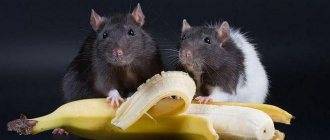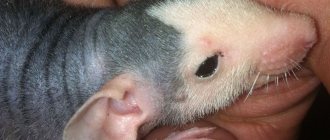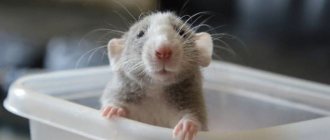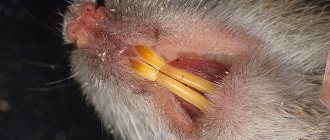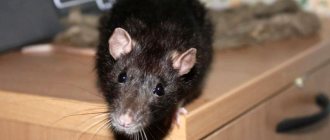- How much sleep do you need? Individually, from 6 to 10 hours is within normal limits for an adult.
- Sleep hygiene - rules for falling asleep and staying asleep normally. (Just an anchor to the slide list).
- The biological clock is a real physiological process that is guided by circadian rhythms. Changing time zones and working shifts “looses” the mechanisms of the biological clock.
- You have to go to bed no later than... - bullshit. Just at the same time.
- If you sleep during the day, buy yourself some good curtains. Melatonin correlates with light. If the sun shines into your eyes (even closed ones), you are not fully resting.
- How long can you stay awake? An adult will survive up to 4 days without irreversible serious consequences.
- Sleep is divided into slow and paradoxical phases.
- The slow phase of sleep is about cleansing the body. If there is no slow phase of sleep, immunity, endocrine system, metabolic processes and homeostasis go haywire. Experimental rats die after 15-20 days without sleep from inflammation when intestinal bacteria enter the blood.
- The paradoxical phase of sleep is involved in information processing. In terms of the level of electrical activity of the brain, it is close to the state of active solution of complex problems.
- When is the right time to wake up? On the transition from the paradoxical phase to the slow one.
- How to determine by eye when you can wake up. When a person was lying quietly and began to toss and turn, you can wake him up.
- Caffeine prevents the body from receiving a signal of fatigue, but does not provide additional energy.
- How to gently slow down an overexcited nervous system. Phenobarbital in small doses - Corvalol, Valocordin, Valoserdin. Antihistamines.
Vyacheslav Dubynin - Doctor of Biological Sciences, Professor of the Department of Human and Animal Physiology, Faculty of Biology, Moscow State University.
M.V. Lomonosov. Skip to video We spend ⅓ or ¼ of our lives in a sleepy state, it’s interesting to imagine what this is for, what phases it consists of, how we can influence it from a physiological point of view.
Nervous system
The brain stem, ancient, evolutionarily early emerging zones. They are responsible for breathing, controlling heart rate, etc. Sleep and wakefulness are for the most part also associated with these structures.
The brain stem includes:
- Medulla
- Bridge
- Midbrain
- Diencephalon (between the hemispheres)
What is marked with yellow circles on the diagram is the most important centers of sleep and wakefulness.
This is if we talk about the macro level. And at the micro level, our brain is cells, and their functioning is highly dependent on the state of the sleep and wakefulness centers. This is something like a power supply.
A person has needs, among them Academician P.V. Simonov identified vital needs (vital):
- food (energy, building materials)
- drinking (water-salt metabolism)
- safe (passive and active defensive)
- homeostatic (respiration, blood circulation, thermoregulation, sleep, wakefulness)
- saving energy (“laziness reflexes”)
- grooming (“body care”)
Homeostasis is the constancy of the internal environment of the body.
Pressure, the amount of oxygen and microelements, all this is included there. And to maintain homeostasis, you need to sleep. Prolonged sleep deprivation causes disruption of homeostasis and stress, and can be fatal.
Sleep, first of all, equals rest. But that's not all. The ancient Greeks understood this. In their pantheon there were 2 gods of sleep - Hypnos and his son Morpheus. The first is the god of sleep, the second is the god of dreams. The Greeks understood that sleep can be rest, or it can be a state in which something chaotic happens, there are “prophetic” or creative dreams. And there are nightmares and “pseudo-prophetic” dreams. The Olympians sometimes used Morpheus to intimidate some hero so that he would not go where he shouldn’t.
We will talk about both the state of sleep and the state of dreams. But let's start with something simple.
Helping rats adjust their sleep patterns
Moving to a new place is always stressful, and the first time you bring a rat home will be no exception. There's a lot to know, so feel free to refer to this simple list. Here are a few things you can try to make the transition to their new home easier:
- Avoid noisy and crowded environments when choosing a room for your cage.
Large crowds and noise should be avoided, but placing the cage in a rarely used room will make the rats feel lonely. Find a happy medium, a place where the rats can see you every day but can still rest and relax.
The bedroom is not an ideal place for this, as a rat's regular nighttime playtime can cause problems for you, and the animals can end up feeling abandoned if left alone in the bedroom.
- Brightly lit rooms or direct sunlight are a big no.
We would have a hard time falling asleep in a very bright room. Rats are no different. Bright light can cause stress and damage vision, especially in albino rats with pink or ruby eyes. Soft lighting suits them best.
- Feeding time.
Feeding your rat will not only strengthen your bond with it, but will also teach your rat its eating schedule. If you are punctual and can stick to consistent feeding times, you will notice that the rats are always awake at that hour. A feeding schedule can help rats learn when they need to be awake.
- Safe havens.
When rats sleep they should feel safe. They will be very happy with a house, tunnel or anything they can crawl under.
- Don't scare the rats.
It can be very tempting to reach out and gently stroke a sleeping rat's fur. However, from the rat's point of view, something unknown pulled them out of their sleep.
This can really scare them and provoke the animal to bite you. They don't like to bite people for no reason, so you'll only be able to feel her teeth on your hand if you manage to scare the poor thing.
- Companions for the rat.
As we now know, rats are incredibly social creatures that value time spent with their companions. Rats require a lot of mental stimulation and can benefit greatly from a partner. They like to sleep in big piles, it looks quite uncomfortable, but don't worry, they are perfectly happy.
Lonely rats tend to sleep longer compared to other rats that are kept among other rats. This comes from pure loneliness and fatigue, which is quite sad. If rats are paired, they will not feel neglected and will have more to do during the periods when they are awake.
How much sleep do you need
The answer is very individual.
It depends on the set of genes, immunity, age, and the state of your neuronetwork. There is a separate scientific field that deals with sleep - somnology. Somnologists debate a lot about the amount of sleep. On the slide below are recommendations from the American National Society of Sleep Medicine:
And counting sleep by hours is not very correct. Sleep is divided into 1.5-hour cycles and it is more correct to consider sleep as cycles. Those. 4-5-6 cycles are within the normal range for an adult. Less than 4 cycles - the body does not have time to rest, more than 6 cycles - problems may begin, for example, with the lymphatic system. There is also sleep hygiene. To ensure good sleep, it would be good to follow the following rules:
These are already the recommendations of Russian somnologists. The rules are simple, but they require regularity, because... Most people have problems not with sleep itself, but with falling asleep.
The brain has biological rhythms. To fall asleep easily, you need to get up and go to bed at approximately the same time. All these life hacks that 1 hour of sleep takes 4 hours to midnight is rather a poetic exaggeration. There is no scientific evidence for this. The only thing that matters is that your bedtime is the same, because... Our clocks don't adjust very quickly.
If you have problems falling asleep, then you need rituals to let your brain know that sleep is coming soon.
It is important to sleep in a specific room. Bed for sleeping. If you work or eat there, your brain stops understanding what you should be doing there. You can't skimp on a mattress. These 6-7 hours every day are very important for your musculoskeletal system.
Before going to bed, reduce the lighting. This way you also let your brain know that you are going to sleep soon. Smartphones and any screens before bed are a bad idea; they don't let your brain know you're getting ready to sleep.
Food. A light snack is fine, but don't put anything dense in your stomach. Everyone will rest, but the stomach will have to work. It's somehow unfair.
Substances (caffeine, alcohol, nicotine, etc.)
Limiting daytime sleep. During the day you can sleep differently. Either 15-20 minutes to freshen up, or a full cycle. But if you sleep a full cycle during the day, then subtract it from your night sleep. The worst option is to sleep for about an hour. Such a daytime nap can only slow down your brain, and not invigorate it as intended.
When prolonged sleep should be a concern
If the age of the rodent is relatively small, but you observe that the rat constantly sleeps a lot in the evening and during the day, this may indicate that the animal is not well. If at the same time the rat is apathetic, its fur is disheveled, and its appetite is frankly poor, it is quite possible that it is either sick or experiencing a vitamin deficiency. You can try adding a complex of vitamins in granules for rodents to the food. If such a measure does not produce results, then you should not delay a visit to the veterinarian.
Now you know what time of day the rat sleeps and when it is better not to disturb your pet.
Did you like the article? Share with friends: [supsystic-social-sharing id=”1"]
- Related Posts
- How to give a rat an injection in the withers, subcutaneous, intramuscular
- Rat toys
- Keeping and caring for a pet rat
« Previous entry
The biological clock
All animals and plants that live on the surface of the planet adjust their lives to the cycles of day and night and seasonality. We are tropical monkeys by origin, who lived where seasonality was weakly expressed. Those. We are mainly influenced by day and night. On average, these are intervals of 12 hours.
Circadian rhythms are also called circadian rhythms. And depending on the time of day, serious changes occur in the nervous and endocrine systems.
They have been working with the endocrine system for a long time, analyzing blood or saliva for the content of the hormones cortisol and melatonin. Cortisol is secreted by the adrenal cortex and is responsible for metabolism. When you're stressed, cortisol goes through the roof, but that's a slightly different story.
Cortisol levels typically peak between 11 and 1 p.m. For many, this is the most productive time to work.
Melatonin is a sleepy hormone secreted by the pineal gland. And melatonin levels correlate with the level of light that our visual system perceives. Its peak occurs around 2 a.m., and then cortisol begins to rise again.
If you go to bed late, try to do it before 3 am so that the concentration of melatonin in your body is higher than the concentration of cortisol.
The hypothalamus, the lower half of the diencephalon, is in charge of all this. Neural networks were discovered in it, which are essentially our biological clock - the suprachiasmatic nuclei of the anterior hypothalamus. There are cells there that are active during the day; they transmit signals to the wakefulness centers. There are cells that are active at night; they transmit signals to sleep centers.
What a name.
Supra is the opposite. Chiasma - optic nerve. The optic nerve leaves each eye and crosses before entering the hypothalamus. It is opposite these nerves that the suprachiasmatic nuclei (SCN) are located.
The diagram on the right is the visual centers of our brain. The most ancient visual center is the suprachiasmatic nuclei. They determine the overall level of illumination. They form a biological rhythm in response to the circadian rhythm. Having formed it, they can steadily maintain this rhythm. A small child is set to a 24-hour rhythm, but in the future the person will maintain this rhythm, even if there are problems with lighting.
It works very similar to a clock. The arrows on the biological clock can be adjusted, but it takes several days to adapt. This joke is called jetlag, many have encountered it. It occurs if you take and fly from Moscow to Vladivostok. For a couple of days you will readjust and sleep at the same rhythm.
Jetlag is a serious stress and an impossible situation for our evolutionary past. But the clock is adjusting. If you do this often, you can disrupt the synchronization of the neurons of the suprachiasmatic nuclei. Such adjustments are caused not only by long-distance flights, but also by shift work.
Next to the suprachiasmatic nuclei is the most important sleep center VPLO - the ventrolateral preoptic nucleus.
Here is an overloaded diagram of how the neurons of the suprachiasmatic nuclei maintain rhythms.
It turned out that even a single neuron in the suprachiasmatic nuclei is capable of doing this. This occurs due to the fact that in the cytoplasm of this nerve cell there are cascades of biochemical reactions that have a daily cycle. Certain proteins and certain genes are key.
Don’t be alarmed, if anything, the Nobel Prize was awarded in 2022 for the discovery of this mechanism of daily cycles. True, this mechanism was first found in the Drosophila fly, and then in mammals.
Biological rhythm of small rodents
Decorative rats are nocturnal animals, so their activity begins to increase in the late afternoon and reaches its peak at night. In the evening, the pet usually comes to life, starts jumping up the stairs, exploring everything and asking to be held. But even this revival can quickly dry up, and you will soon find that your pet has dozed off again. Sometimes you get the feeling that the animal is constantly sleeping.
This behavior is completely normal - a domestic rat sleeps 13 hours a day, mainly during the daytime.
Most pets are also awake during the day, especially if their owner is at home. House rats are usually active for several hours during the day, using this time to eat and walk around the cage. Young animals may be more energetic; they sometimes spend the entire day either awake or asleep.
At night, animals are usually very active, as can be confirmed by anyone who sleeps in the same room where the cage is installed. The animals rustle with litter and food, play with each other, jump on shelves and wall bars, and set up a home for themselves. Their activity decreases towards dawn, so in the morning, when the owners get ready for work, their pets are usually fast asleep.
IMPORTANT: With age, the daytime activity of decorative rodents decreases even more; they can sleep longer. This is also normal behavior.
Sleep phases
There is a resting phase and a dreaming phase.
The fact that these different conditions were suspected at the end of the 20th century, when they learned to write an electroencephalogram (EEG) well. EEG is the total electrical activity of the nerve cells of the cerebral cortex; in order to record it, you need to attach sensors to your head in certain places:
α-rhythms, β-rhythms, δ-rhythms, θ-rhythms were identified. It turned out that different phases of sleep are characterized by different rhythms.
,
EEG is the total electrical activity of nerve cells, and for it to be beautiful, the cells must work synchronously, i.e. stand idle Beautiful waves on the EEG are an idle state of neural networks, when there is no specific information, but a certain neural circuit is in a state of readiness.
Alpha rhythms were the first to be discovered; their frequency reflects the active functioning of our sensory systems. The sensory systems are actively working, but there are no real visual or auditory signals. When a person is in a state of quiet wakefulness
- sits with his eyes closed and does nothing - we will record a beautiful alpha rhythm.
Beta rhythms are faster, their frequency reflects the transmission of a signal within the cortex of more hemispheres - mental load. You were just thinking about something difficult and then you relaxed. At this moment you can record a beautiful beta rhythm.
If most nerve cells are engaged in specific tasks, no waves are visible at all. A low-amplitude, almost flat curve is written. The rarer the waves and the larger their amplitude, the lower the brain activity.
Theta and delta rhythms are written when the brain increasingly enters a sleepy state.
Theta rhythm is about falling asleep.
Delta rhythm - interaction with deep sleep centers. This is the state of rest.
During the transition from wakefulness to sleep, the waves on the EEG become more rare and high-amplitude.
In the alpha rhythm there are 10-12 waves per second, and in falling asleep there are already 1-2 waves. The presence of delta waves indicates a state of sleep/rest.
If an adult has delta waves while awake, this may indicate the occurrence of a tumor, for example.
If you continuously write an EEG during sleep, the delta rhythm of sleep is replaced by a strange picture. The person continues to sleep, sometimes it is even more difficult to wake him up during this phase, but a rhythm appears on the EEG, as if the brain is actively processing information. Not just alpha and beta waves, but sometimes almost flat pieces.
The paradox is that a person is asleep, but the brain is awake. So this phase of sleep was called “paradoxical sleep.” It is also called the “rapid eye movement” phase, REM sleep, or “rapid eye movement” REM sleep.
If a person is awakened during this phase, he will often say that he was dreaming.
It gradually became clear that during this phase, a person processes accumulated information. A clear division appeared: sleep-rest, and sleep-dreams. And the purpose of a dream is the processing of accumulated information.
The most important picture of the entire lecture:
The columns are one full human dream. Horizontal time in hours. Green color is delta sleep or slow wave sleep. Red bars - REM sleep.
The duration of the cycles is about 1.5 hours. The ratios of delta sleep and REM sleep change. In the beginning, the first 2 cycles, it is more important to rest. Afterwards, the brain focuses more on processing the accumulated information, not only fresh and relevant information.
Domestic rat: reviews
“I love both cats and dogs, but I’m not ready to keep them at home. But I have a special love for rats. This is my spirit animal or something. Creatures close to our hearts have gone to the rainbow many times already. Thanks to them, I learned to relate to death more easily.”
“My girls are just incredibly cute, despite their long hairless tails. I taught them several commands. My favorites are “circle” and “serve.” When I myself was eating something delicious, Sonya would run up and start spinning wildly in place so that she could be treated. Affectionate, curious, cheerful"
“I speak from personal experience – males are much more “fragrant” than girls. My Francis wrote everywhere. Notebooks and textbooks were stained with yellow, and clothes had to be washed every day. Mom was terrified. Well, of course he chewed up the furniture a lot. When he passed away, I was categorically forbidden to get a new rat. I still remember my first pet with tenderness.”
“In my opinion, rats are the only rodents that become attached to humans. They are also cunning, curious, clever thieves. They can bite – most often without understanding what’s what. That’s why you shouldn’t stick your fingers into the cage through the bars, and also don’t try to kiss if your breath smells strongly of food.”
“My rat lived for more than 3 years and weighed 700 grams. Calm and approachable, he was my favorite. He was not afraid of either a cat or a dog, but they respected him. He pulled out fluff from cats for nesting and stole dog food. Mr. Rat (we never gave him another name) walked freely throughout the apartment, voluntarily returning to the cage as if it were his home. There was no unpleasant smell from the cage, you just need to clean it more often! The breakup was hard, and this is the only reason I didn’t get a rat again.”
I strongly advise all rat breeders, present and future, to read the book by science fiction writer Olga Gromyko - “Rat Ratcats. The life of a rat in stories and pictures.” She conveys the characteristics of these animals amazingly and with humor.
When is the right time to wake up?
At the end of the second column.
When brain activity is almost awake. If you go into the green phase, especially where the greenest bars are, it is very difficult to wake up a person, and it will be long and difficult for him to wake up, because... the brain is in a very “slow” state. How do devices that promise to wake you up at the right time work?
The most accurate are rag pads with eye movement sensors. As soon as you stop actively moving your eyes, it’s time to wake you up.
Dreams are often emotions. Emotions quicken your pulse. Smart watches will be able to correctly wake you up based on your pulse.
During the REM sleep phase, a person does not move. When a sleeping person was sleeping and sleeping, and suddenly began to stir, you can wake him up. This is done by devices that simply listen to you sleep. But there is no accuracy here.
Our main center of wakefulness is located inside the bridge. There are cells there that collect signals from all sensory systems. Any of our sensory systems can influence our state of wakefulness: the alarm clock rings, the light shines in our eyes, they gave us ammonia to sniff, we shook our shoulder.
Nerve cells of the reticular nuclei of the pons (upper right corner of the picture above, A-block). When they were discovered and described in the 20th century, they could not understand what kind of cells they were and why they reacted to everything. And this turned out to be the main center of wakefulness.
Key sleep signals travel to the midbrain. Midbrain neurons produce serotonin (5-HT). NREM sleep is influenced, among other things, by serotonin. We maintain a little muscle tone.
When we enter REM sleep, the locus coeruleus, which is located inside the pons, releases the molecule norepinephrine as a neurotransmitter. Norepinephrine blocks serotonin, blocks muscle tone, but allows the cortex to move into a more active state.
The fact that norepinephrine blocks muscle activity is very important. If you don’t block the muscles, dreams provoke a reaction, your arms and legs will run and grab. It happens, but it is pathological.
By the way, sleepwalking or somnambulism is associated with slow-wave sleep. Residual brain activity causes the person to move slowly and can be put back down.
But fighting during sleep is a violation of the paradoxical sleep phase.
How and where do rats sleep?
New rat owners are often surprised to see their pet in a frozen position. However, there is no reason to panic. The fact is that rats can literally fall asleep on the go. You can often find a fluffy dog hanging upside down on a ladder, falling asleep near the feeder, or lying right in the running wheel.
Since decorative rats are socialized animals, rodents often sleep close to their cage neighbors, so they feel protected and warm during the cold season.
Also, the owner of a small animal should know that you should not be scared when you see a frozen rat with its eyes open, since fluffies close their eyes tightly only during daytime sleep, so that the bright light does not interfere with their rest. At night, rats can sleep or simply doze with their eyes open or slightly open. For animals that are nocturnal, this is quite normal.
To make it comfortable for the rat to sleep, it is worth installing a special house in the cage, and in addition, hang several hammocks corresponding to the number of animals.
If a rat suddenly escapes from its cage, it can fall asleep anywhere. Most of all, rodents like the coziest and warmest corners in the apartment. Quite often, the master bed or the spaces between the sofa cushions act as a sleeping place. If the animal has escaped, you need to be more careful so as not to accidentally crush the peacefully sleeping rodent.
slow sleep
Delta sleep is sleep for rest. At this time, the brain consumes the least energy. This allows the entire body to replenish its supply of nutrients and cleanse itself of unnecessary things. For example, the body will supply glucose and remove urea at its usual pace, but due to a decrease in brain activity, homeostasis will be restored.
But everything turned out to be a little more complicated.
In 2012, an effect was discovered that was called the “glymphatic system of the brain.” “Glymphatic” is made up of “lymphatic” and “glial”.
The lymphatic system helps the circulatory system remove excess fluid from our tissues.
When we look at the brain, we see billions of neurons. But they are not hanging in emptiness. All spaces between neurons are filled with auxiliary cells - glial cells.
Glial cells support neurons and create mechanical packaging for them. They isolate neurons from each other so that neurons touch only in the right places - synapses.
Glial cells surround blood vessels. Those. the substances brought by the blood first pass through the glial cells, and only then reach the nerve cells - the blood-brain barrier.
In the waking state, the spaces between glial cells are very small.
In the state of slow-wave sleep, the volume of glial cells is 20% less. This is due to norepinephrine (which prevents us from fighting during dreams).
There is a lot of norepinephrine during wakefulness and REM sleep, but little during slow-wave sleep. When norepinephrine is low, the volume of glial cells decreases and gaps appear. Due to this, the movement of tissue fluid from the arteries to the veins is more intense. This increases the “drainage function” of the brain.
Here's a more detailed drawing to illustrate the processes above:
If you don’t sleep with slow-wave sleep, the brain is not cleaned as well, and all sorts of bad things accumulate, including beta-amyloid, a risk factor for Alzheimer’s disease.
For many years, Russian researcher Ivan Nikolaevich Pigarev developed the visceral theory of sleep.
Apparently, this is adequate to reality and is directly related to the problems arising from insomnia.
Visceral - aimed at internal organs. According to the visceral theory, during wakefulness, information from the internal organs does not pass to our brain. While we are awake, the brain needs to regulate breathing, coordination, movement, and process information from all sensory centers. He has no time for internal organs. And the brain postpones this processing until the slow-wave sleep phase. During the slow-wave sleep phase, internal organs can “reach out” to the brain and receive regulatory signals.
It is assumed that our body itself does an excellent job of regulating the condition of its internal organs, but for this it needs time that it can do this without being distracted by a bunch of other things.
The immune, endocrine, respiratory, cardiovascular, excretory systems, everything is tied to the guiding signals of the nervous system. If there is a total lack of sleep, then problems arise in the functioning of internal organs, because... they were not given guidance signals in time. Homeostasis begins to storm.
Those. First of all, clinical lack of sleep worsens the functioning of internal organs.
If an experimental rat is deprived of sleep, it dies by the end of 3 weeks.
And not from problems with the brain, but from problems with the cardiovascular system and gastrointestinal tract. The most common cause of death in animals that are deprived of sleep for a long time is total inflammation of the intestines. Against the background of which the intestinal microflora breaks into the blood, general inflammation occurs - sepsis and death.
If you haven't slept for a week, you probably won't die from a stroke. But a problem with sepsis may arise. This is such a paradox.
Here is a picture that shows how sleep deprivation experiments are carried out on animals:
An EEG is recorded on the rat. When it becomes clear that the rat is falling asleep, the carousel is turned, the rat falls into the water and wakes up. This way, scientists can study the effects of deprivation of REM sleep, slow-wave sleep, or no sleep at all.
In the middle of the 20th century there were desperate people who conducted experiments on themselves.
In 1959, 33-year-old Peter Tripp spent 8 days (201 hours) awake while taking amphetamines. For several more years he felt the consequences of his experiment. But he got into the Guinness Book of Records.
In 1964, Randy Gardner, 17 years old, went 11 days (264 hours) without sleep. Apparently, this young man did without amphetamine and did not have any particular consequences, he just slept off and that’s all. But this was the last straw for the Guinness Book of Records. After this incident, they did not accept records of “no sleep for n-hours.”
The slide contains more details about the progress of both experiments:
Who is most susceptible to attacks?
Rats are smart and even smart animals (it’s not for nothing that they manage to survive in the most unfavorable conditions), so most often they attack those they consider weak prey. And therefore, children, old people, sick and weakened people suffer more. In addition, prisoners often become victims of rats (there are a lot of rats in prisons, and they often try to take food from prisoners), homeless people living in rat habitats and disturbing them, as well as alcoholics.
Rats do not attack people often, but such cases do occur.
Sources
- https://krot911.ru/krysy/o-krysax/napadayut-li-krysy-na-lyudej.html
- https://eparazit.ru/mozhet-li-krysa-napast-na-cheloveka.html
- https://netparazit.ru/gryzuny/mozhet-li-krysa-napast-na-cheloveka.html
- https://stopvreditel.com/gryzuny/myshi-i-krysy.html
- https://apest.ru/krysy/vse-o-krysah/chem-opasny-krysy-dlya-cheloveka/
- https://petse.ru/gryizun/myish_krys/napadayut-li-krysy-na-lyudej.html
[[collapse]p>
Paradoxical dream
We spend approximately 20% of our sleep time in the REM sleep stage.
If a person is woken up at this stage, he will most likely say that he had a dream. But he most likely will not remember dreams at other stages. In the final stages of paradoxical sleep, dreams are usually light. Nightmares are more common in the early stages, and they can be so overwhelming that they jolt you out of sleep. About one in 15 people have dreams every day.
Creative people value their dreams very much. On the slide are sketches of the dreams of Salvador Dali and Marc Chagall:
Back in the 19th century, Sechenov said that dreams are unprecedented combinations of experienced impressions.
First of all, the brain deals with the information of the day; the structure of the hippocampus helps it with this. And then you can deal with something that has been accumulated almost throughout your life.
If you clearly set a task for the paradoxical sleep system before going to bed, then it is able to continue solving this problem in a dream, and you will find a solution. Or you will wake up with a ready-made solution.
Anecdote on the topic:
At first, Pushkin dreamed of the periodic table, but he did not understand anything.
In order for information to be recorded in long-term memory, you need to sleep correctly and allow the paradoxical sleep phase to work with the received data.
First, the information of the current day is “written” to a structure called the hippocampus. And only then is it rewritten throughout the cerebral cortex. Essentially, the hippocampus is operative memory, and the cerebral cortex is long-term memory. And rewriting, apparently, occurs during paradoxical sleep.
Also I.P. Pavlov understood that for effective learning the brain needs the right state:
As you can see, in addition to the state of the brain, it is important that the information is also meaningful to you. Otherwise, the antispam system will work, which does not need anything extra.
By the way, the “edge effect” works well. We remember better information that was received at the beginning of the day and just before bed.
This is what our hippocampus looks like from different angles:
Translated from English, hippocampus means “seahorse”. Neuroanatomists were apparently poetic people.
The hippocampus contains neural networks that are capable of capturing some information almost instantly. For example, in the next 10-15 minutes you will definitely remember the word “hippocampus”.
The hippocampus has interesting properties:
A small memory capacity, for example, does not allow us to perceive the first 10 minutes of a lecture and the end of the second hour of a lecture equally well.
New information is stored during the “working day”, and rewriting partly depends on the emotional background. Sometimes we memorize information that we would like to forget and cannot remember the necessary information. But this is a slightly different topic.
During rewriting, processes of generalization and association with other fragments of your experience take place. The more interesting your day was, the more REM sleep you will have that night.
On average, children have longer REM sleep than adults, apparently because... the world is new to them.
A little about the physiology of rats:
- Rats are nocturnal animals, but can adapt to their owner's regime
- The average lifespan of rats is 26-40 months (2-3 years)
- The average weight of an adult male is 300-500 g
- The average weight of an adult female is 225-325 g
- Body temperature 37.5-38.5 C
- Pregnancy 21-23 days
- Litter averages 6-12 rats
- Weight of the baby rat at birth is 4-6 g
- Puberty occurs at 6-8 weeks
- Approximate food intake of an adult rat per day is 15-20 g
- Approximate water consumption per adult rat per day is 22-33 ml
Chemical substances
There are 90 billion nerve cells in our brain; they come into contact with processes, forming contacts - synapses. At synapses, signals are transmitted by neurotransmitters. These substances, called neurotransmitters, are important for understanding how the brain works.
And these same substances are the basis of psychopharmacology. With the help of them we try to control or correct the functioning of the brain
The main mediators of the central nervous system:
Glutamate
- stimulating, transmits the main information flows in the brain, is associated with sensory, memory, and preparation of movements.
Gamma-aminobutyric acid (GABA)
- inhibitory, blocks information flows, provides motor control, emotional control, sensory control (when we can listen to one voice and not turn to another).
Because GABA is the main inhibitor; its role in falling asleep is great. If we shift the balance towards more GABA, we fall asleep more easily.
More often the opposite problem occurs when the concentration of glutamate is higher. In adults it is nervousness and insomnia; in children it sometimes looks like ADHD.
The most serious excitation-inhibition imbalance is epilepsy.
To shift the balance in favor of inhibition, drugs that activate GABA synapses are used.
Classic sleeping pills - barbiturates, benzodiazepines.
Phenobarbital is one of the well-known and over-the-counter molecules that is part of Corvalol, Valocordin.
Valerian has a similar, but weak effect.
Sometimes they use pure GABA in tablets, but it hardly passes into the brain, and if it does, it does not work as an inhibitory neurotransmitter, but rather as food for nerve cells. So it's more of a nootropic than a sedative.
Serotonin is also important for triggering a sleepy state. Poor functioning of the serotonin system is a prerequisite for depression and insomnia.
You can help a little with drugs containing the molecule from which serotonin is made. Again, this is the level of dietary supplements and nootropics.
Our body produces glutamate and GABA easily and in any quantity.
To make serotonin, you need a tryptophan molecule. We get tryptophan from food proteins and cannot make it ourselves. Taking it in tablet form can have a mild dietary supplement effect and improve sleep. Manufacturers’ positioning of tryptophan-containing drugs as antidepressants is clearly overkill.
The specificity of dietary supplements is that they do not help everyone, but if they help, they allow you to gently correct some problem.
Tryptophan in our nerve cells is converted into 5-hydroxytryptophan, and then into serotonin. 5-hydroxytryptophan is also offered as a supplement. It works a little more reliably, but still remains a dietary supplement.
A mediator with the opposite effect, i.e. interfering with sleep is called norepinephrine.
A computer game, a parachute jump, or a sports victory are norepinephrine types of pleasure.
Molecules similar to norepinephrine also interfere with sleep. For example, some cheese components. Norepinephrine is formed from the amino acid tyrosine. And the bacteria that make cheese can convert tyrosine into tyramine. And tyramine is similar to norepinephrine.
What determines the lifespan of a rodent?
How long domestic decorative rats live depends on many factors - breed, living conditions, genetics and much more.
Among other things, the size of an animal's home can have a significant impact on its lifespan. If the cage is small, it is difficult to place devices for games and activity of the animal in it, which, in turn, provokes little physical activity. Lack of activity can cause excess weight, muscle atrophy in the animal, and, as a result, heart and vascular disease.
In addition, it is unacceptable for your pet’s home to be located in a draft; this can provoke various respiratory diseases, and being located under the scorching sun can lead to overheating.
Another important factor is cleanliness. If you ignore cleaning, pathogenic bacteria can develop in the cage, and sooner or later the animal will get sick.
The influence of genetics on life expectancy
Heredity can also affect the lifespan of a rat. When purchasing an animal, even in a specialized store, you cannot be sure that the breeding rules have been followed.
Without following the rules for reproduction, it is impossible to raise offspring that are viable, healthy and without any mutations, so it is better to purchase an animal from experienced breeders.
In addition to incorrect matings, there is a danger in purchasing an animal from a genetic line of rats for research. Such animals can carry various dangerous genes - obesity, immunodeficiency, oncogenome, etc. Such animals have a high probability of being carriers of diseases, as well as being susceptible to various ailments. It is unknown how many years such a domestic rat will live.
It is also undesirable to purchase rats from a line of closely related crossings (inbreeding), such offspring tend to degenerate and have a short life span.
Any such animal has a very short life span.
In order not to make a mistake and purchase a healthy and viable animal, you should chat on forums and find people who professionally breed decorative rats.
How do the life spans of different breeds of rats differ?
Today, many breeds have been bred that have the parameters necessary for the breeder - color, coat, anatomical features, and even the location of the ears and the length of the tail (even a breed of tailless rats has been bred).
Look at the table and you will find out how the type/breed of a rodent affects its life expectancy:
| View | Standard | Sphinx | White | Tailless |
| Parameters/differences | Similar to wild rats, have different coat colors | No fur | White color | No tail |
| Impact on life expectancy | Life expectancy is standard | Tendency to infectious diseases | This breed was bred for laboratory research, so their life expectancy is short. | Lack of balance due to a docked tail, which can cause various injuries. The tail functions as a thermostat, which also has an impact on health and life. |
It is worth noting once again how long the popular albino rats live. This species was also bred for laboratory research, which means it already has interventions at the genetic level, so the life expectancy of such rats is no more than 1 - 1.5 years.
Regarding another fairly common breed, many are also interested in the question of how long do Dumbo decorative rats live at home? Fortunately, this breed, beloved by many breeders, has a standard lifespan of 2-3 years, if properly cared for.
Based on this, we can conclude that nature is the best designer , and by interfering with the genome of an animal, you can have a great negative impact on its life and health.
So why do rats live so short?
The lifespan of every living creature is determined genetically. There is also a close connection between an animal's ability to reproduce and its lifespan. The female is ready to reproduce, starting from one and a half months of age, and during feeding she can become pregnant again.
Yes, a domestic rat can be limited from frequent births, but in the wild, a rat often constantly produces new offspring, which is why its body quickly wears out.
Rats have a fast metabolism, and this also affects their life expectancy. A rat, without getting food within two days, simply dies.
Rats born from “casual relationships” are prone to various kinds of diseases, so it is advisable to purchase pets only from trusted and experienced breeders. Conscientious rat breeders select not only the best breeding individuals, but, most importantly, the healthiest ones to produce offspring. In good nurseries, the female is not allowed to reproduce a lot, because the exhausted body of the expectant mother produces weak individuals that are not viable.
All these factors have a strong impact on life expectancy, so it is worth taking them into account.
Sleep and wakefulness centers
- The main center of wakefulness is in the reticular nuclei of the pons.
- The two sleep centers are the VLPO of the hypothalamus and the area of the midbrain associated with the release of serotonin.
- Next, the locus coeruleus is responsible for norepinephrine, an auxiliary center of wakefulness.
- Suprachiasmic nuclei, also known as biological clocks.
- Reticular nuclei of the medulla oblongata, more about them below.
In point 5 there is an auxiliary sleep center that responds to the chemical composition of the blood. When we are sick, tired or have eaten heavily, the reticular nuclei send appropriate signals and increase the sleepy state.
Here's how all these sleep-wake systems are configured:
Our main center of wakefulness, the pontine reticular nuclei (yellow block), causes general arousal in the brain.
The main sleep centers (blue block in the center) constantly compete with it, which inhibit the main wakefulness center.
The main center of wakefulness strikes back through the locus coeruleus (blue block) and releases adrenaline. Norepinephrine can also react to stress, so this may also keep us awake.
We also add the reticular nuclei of the medulla oblongata (blue block on the right), which react to the chemical composition of the blood.
Plus, the suprachiasmic nuclei, which are the biological clock (green block), are affected.
Plus, all sensory systems (white block on the top left) can transfer us from a sleepy state to an awake state thanks to the activation of the reticular nuclei of the pons.
This is not the most complex system of the body. There are many more areas in the memory system or motor system. But the system is still complex and includes various factors.
For example, falling asleep instantly is narcolepsy. This is a pathology, you can’t do that. Otherwise you will fall asleep anywhere and a predator will eat you. But you need to wake up quickly; if a predator comes, you need to jump up and run.
Fact 1 Teeth grow continuously
For this reason, it is vital for them to constantly chew on something. If you do not allow rodents to grind down their fangs, they can grow up to 12 centimeters, which will result in the death of the animal. Therefore, they gnaw on almost everything: it will not be difficult for them to gnaw a hole, for example, in a concrete wall or a steel water pipe. Here is a list of materials that cannot resist toothy pests:
- Concrete;
- Metal (except iron, as well as especially durable metals);
- Tree;
- Stone;
- Plastic and plastic.
The only material that in its natural form is too tough for our little animals is glass.
Source
Melatonin
Melatonin is controlled by the hypothalamus. The release of melatonin is inhibited by visual signals. Even through the eyelids, bright light prevents the pineal gland (the piece of the brain where the black cursor is pointing in the picture) from releasing melatonin.
If your regime is biased towards sleeping during daylight hours, then take care of thick curtains.
Melatonin disperses throughout the body and reduces the activity of all systems: the heart beats slower, intestinal function slows down, and body temperature drops. Plus it is an important antioxidant.
For sleep problems, it is recommended to take melatonin tablets. This substance also has a mild effect, at the level of a dietary supplement. If you often change time zones, understand the importance of melatonin. As you age, problems with melatonin production may arise.
Range and specific habitats
Rats live all over the globe, with the possible exception of the Arctic and Antarctic. They adapt quite easily to even the harshest conditions, so you can find rat tracks in the snow even in the cold winter. Under natural conditions, rodents live in forests, fields, and along the banks of reservoirs. Rats dig holes underground, occupy natural shelters, hollow trees or nests on branches.
But still, rodents prefer to settle closer to people. In rural areas, they can live in cowsheds and poultry houses, in outbuildings, in underground floors, and construction waste. In cities, rats live in garbage dumps, warehouses, and often even in apartment buildings. Residents of the lower floors, wondering where rats suddenly come from in the apartment, should know that animals can come from the basement, garbage chute, or technical corridor.
Being extremely cautious, rats try to settle in the safest places and act without leaving traces.
More about drugs
Glycine - passes into the brain very poorly, affects the level of dietary supplements, but for some it has a slightly calming effect.
Histamine is a substance that is associated with inflammation. Antihistamines are what you take when you have allergies. Antihistamines have a side effect - a inhibitory effect on the brain. The creative thought of pharmacologists turned a side effect into a main one. These include anti-motion sickness pills and tranquilizers to relieve anxiety and improve sleep.
Caffeine has an activating effect. When the body gets tired, the adenosine molecule is produced in large quantities. Caffeine prevents adenosine from transmitting the signal of fatigue, resulting in an invigorating effect. Because This is not additional energy, but lending from one’s own resources.
Danger to humans
Rats are carriers of dangerous diseases, including:
- plague;
- typhus;
- tularemia;
- toxoplasmosis.
Rabies in rats is another serious problem. A rabid rat can attack a person or any animal, infecting it when it bites.
In addition, rodents cause serious economic damage by eating crops and food supplies, spoiling non-food products, and damaging electrical networks (which can lead to fires). Rats living in houses spoil property and food and pose a health hazard. Therefore, having noticed the first traces of rat presence, it is necessary to urgently take action.
Questions
I dream that my back hurts.
I wake up and my back hurts. What comes first? There are probably problems with your back, but when you are awake they do not “reach” the brain. It was not a dream that provoked the pain, but a signal from the back that reached the brain. Most likely so.
Although with age, really long sleep can cause back pain. Our intervertebral discs are strongly compressed from walking upright, and in sleep this whole structure straightens and can put pressure on the spinal nerves. This sometimes provokes long sleep.
Is it harmful to sleep 1.5 hours during the day?
Focus on the body's request. If he feels good, go to sleep. You may have to subtract these 1.5 hours from your night's sleep.
What place does sex have in sleep cycles? (the girl asks)
Everything is very individual, especially for the female body. I recently gave a lecture. Depending on the specific sexual act, the nervous system can go into either excitement or inhibition. In this regard, the male body is more predictable - more often the nervous system is inhibited. But evolutionarily, sex is more important than sleep (reproducing is more important than surviving).
I am 40 years old, I sleep less than 6 hours and get up very early (around 4:30). Is this a violation?
If you feel great and the morning hours are productive for you, perhaps you just have that chronotype. Our ability to respond to sunlight, the amount and speed of production of the proteins responsible for this, is inherited. You can read about chronotype.
Why is sleep disrupted during covid?
Because neuroinflammation is occurring. Especially in severe conditions, there is serious systemic inflammation, which leads to disruption of brain function. Sleep disturbance - flowers. Delusional states also occur
How do you track your sleep stages?
I personally experimented with the alarm clock. I fall asleep almost instantly, so I tried moving the wake-up time back and forth by 10-15 minutes. I found my ideal - 6 hours 15 minutes.
Why do some people have positions that make it easy for them to fall asleep, while others simply find it impossible to fall asleep in?
Traditionally, it is considered comfortable to sleep on the right side, worse on the back, even worse on the stomach, even worse on the left side. In fact, your specific spine, your mattress, and an old knee injury are all taken into account. I sleep on my right side.
But a person turns over 20-30 times a night. If a person sleeps in one position all night, this may be a sign of being too tired. If, on the contrary, it spins continuously all night, this may be an indicator of severe stress. Everything is individual.
Why is it impossible to sleep for days due to pain and fever?
This is a sensory signal! Moreover, if we are talking about heat from infectious diseases, interleukins molecules arise, they strongly influence the hypothalamus. Everything is bad. And thermoregulation centers and sleep and wakefulness centers.
Pain is norepinephrine rushing in. What a dream this is.
What causes sleep paralysis?
Listen to the lecture by Mikhail Poluektov. He talks very well. In the meantime, here's a spoiler for you.
Sleep paralysis is when a person wakes up in a very deep paradoxical stage of sleep. The norepinephrine blockade of the muscles is still working, consciousness is working, but a piece of the brain is still dreaming. This is the strangest state.
What living conditions are required for decorative rats?
It is best to place the rat in a spacious wire cage Caring for your rat. Height - no less than 50 cm, minimum floor area - 50 × 80 cm. The flooring must be hard and even, for example plastic. The option with rods will not work: the animal may damage its paws.
Photo: borisenkoket/Shutterstock
There are several rules for placing a house. Rodents are susceptible to cold and heat. They feel best at a temperature of 20 degrees. Therefore, the cage is usually placed away from direct sunlight, radiators and drafts. If there are other animals in the house, then the home should be, for example, on the Rat: Species Profile nightstand or table.
A nipple drinker and bowls must be placed inside the cage. If desired, you can buy a tray and filler for rodents. The rat should also have a shelter: a hammock or a house.
Photo: Bilanol/Shutterstock
Rodents love toys very much. For entertainment, owners choose running wheels, tunnels, platforms and wooden figures. The latter should be changed regularly, otherwise the animal will get bored.
Rats like to make nests. Therefore, you can periodically put paper in the cage. Remember that newspaper sheets will not work. The ink can cause poisoning to your pet.
How to extend the life of a pet? Recommendations for owners
It is very important to treat all diseases in a timely manner and prevent them from becoming chronic. Not everyone understands the anatomy of rats, and even fewer people know about possible diseases.
In this case, you can contact a veterinary clinic; now almost all specialized clinics have a doctor who treats rodents directly - a ratologist. In small towns, it will most likely be difficult to find such a specialist, but even an ordinary veterinarian can easily diagnose the disease and prescribe therapy.
In addition to health, it is important to pay attention to the maintenance of your pet; for a comfortable life, rats require a spacious cage, which will be equipped with everything necessary.
The litter you choose for your cage is also important. Many people are not aware that woody ones are not desirable for use in rat cages. This is due to the content of essential oils in the tree, which can cause allergic reactions or diseases of the ENT organs.
When buying a new pet, you should isolate it from other pets for a month so that the animal undergoes adaptation and adapts to foreign bacteria. To do this, it is worth placing the cage in a room where other animals will not have access.
Conditions for keeping rats and cage hygiene
Life expectancy is closely related to the hygiene and living conditions of decorative rats, for example:
- the size of the home - the more animals, the larger the area should be. Females require tall cages, while males, on the contrary, prefer a larger area;
- accessories - ladders and shelves are necessary to maintain physical activity;
- couple - it is important not to forget that in the wild these animals live in packs, and it is best to keep several individuals at once (of the same sex - unless you plan to become a breeder);
- walks - by purchasing a walking ball, you will provide the opportunity for even greater activity of the rodent, and besides, it is safe;
- care - rats are social animals, they become attached to members of the household and require attention and care.
If you can provide your rodent with all the necessary conditions for a comfortable life, you will contribute to his long and happy life.
| Necessary | Running wheel; shelves; ladders | walking ball | Cage dimensions | Proper nutrition |
| What does it affect? | Prevention of excess weight; prof muscle atrophy | Safe walks, additional physical activity | Promote a stable emotional background, space for physical activity | Disease Prevention |
Proper nutrition
Life expectancy in the wild directly depends on the nutrition of the rodent, often this is insufficient or poor nutrition:
- Foraging for food in landfills.
- Feeds on small animals and insects.
- The predominance of plant foods.
- Cannibalism - in conditions of hunger, rats often eat their relatives.
Settling in cities or near them, many rats die from the poison that people spread to fight animals.
For a long and healthy life, a rat should eat about 80% grains and about 20% vegetables/fruits/greens. There must be constant access to clean, usable water.
The decorative rat will also need a mineral stone for grinding down its teeth.
Young rats should be fed boiled meat and eggs at least once a week. Sometimes you can pamper them with nuts. Sprouted grains have a tonic effect and prevent many diseases, so they are also recommended to be added to the diet of decorative rats.
